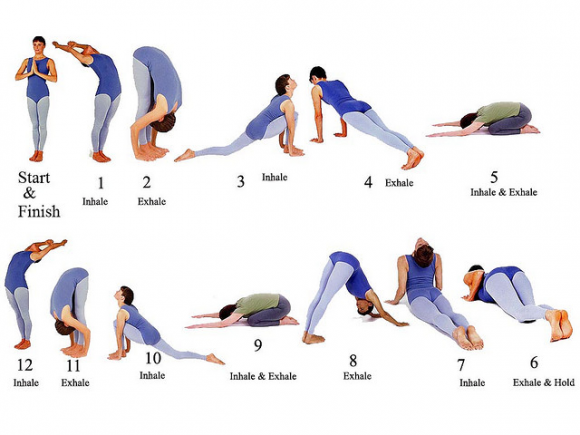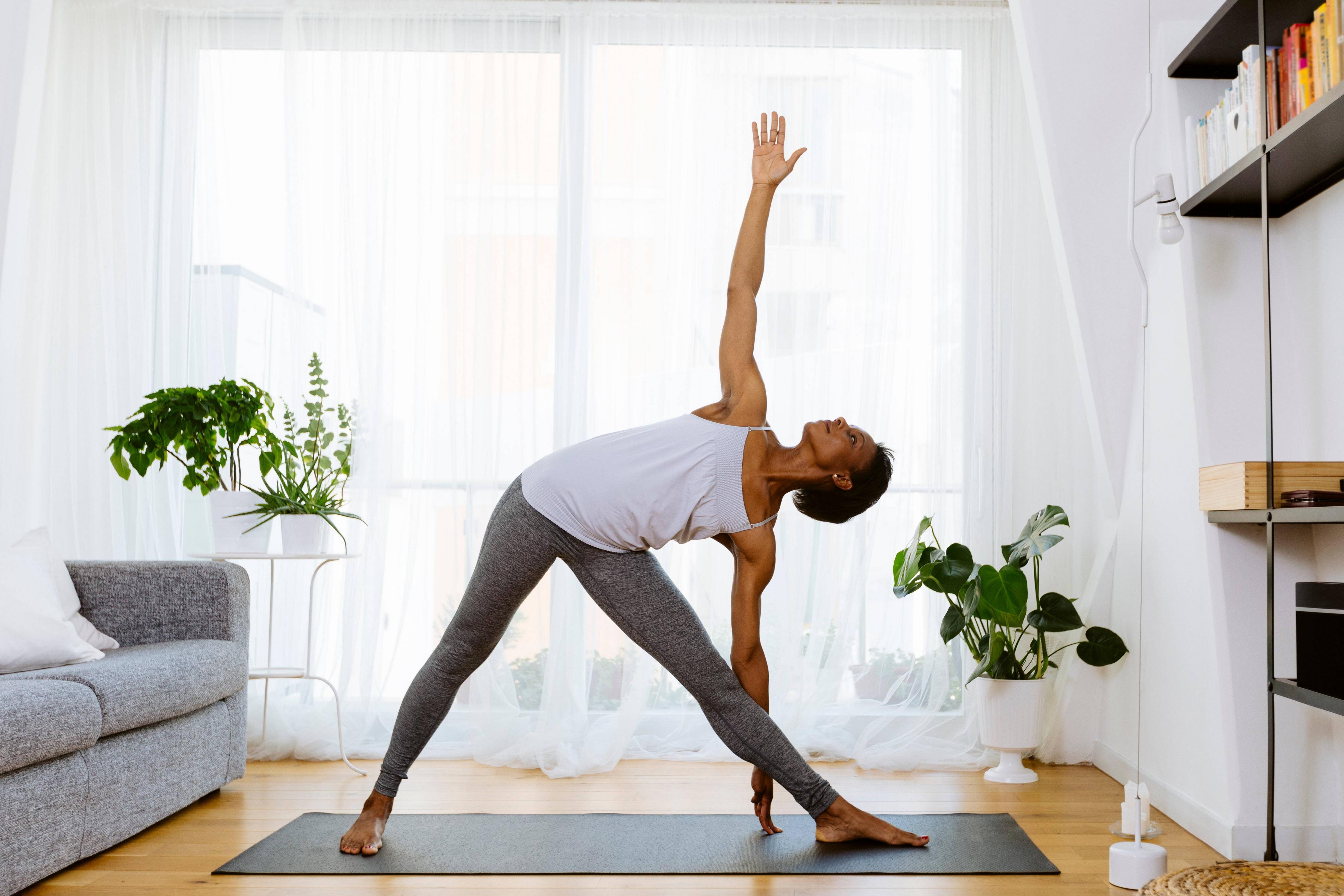
Yoga can help stroke survivors become more active and balanced, according to new research. Study published in Stroke Journal shows that Yoga can help stroke victims regain physical health. However, yoga cannot replace rehabilitation. It is important to talk with your doctor about whether yoga is right for you and which poses to avoid. This article is designed to provide information on the safety and effectiveness of yoga for stroke patients.
The best yoga position for stroke victims is a seated pose. You should keep your hands behind your knees while you are seated. Your right leg should be straight in front of you, while your left leg should be bent behind you. The hips should be parallel to each other. You should hold the pose for 5-10 breaths, then move on to the next side. Be gentle with yourself when practicing the poses. You can injure yourself if you do too much at once. For a strong body, you should keep moving at a steady pace.

It can also be helpful to overcome the physical challenges that often accompany stroke recovery. It can also help to reduce the likelihood of permanent disability and improve your overall health. A stroke can result in severe injury to your body. A stroke occurs when blood stops flowing to your brain because of a clot (or ruptured arterial). This causes brain cells to die and no longer receive the oxygen they need to function. This can cause memory loss and impaired muscle control.
This practice will improve your balance, help you regain independence, and increase your quality of your life. Research has shown that modified yoga interventions can increase independence and improve quality of life for stroke victims. It's an affordable, effective and cost-effective way to improve motor functions in this population. It can also be beneficial for your own health. It is important that you know that yoga can be done at your home. Yoga can be a great option for stroke survivors and can improve your quality of living.
Yoga can help stroke patients, as well as improve your overall health. A good yoga practice can help you gain strength and mobility and reduce your risk of cardiovascular disease and cancer. It can also improve your physical and mental health. You should seek immediate medical attention if you suffer from a stroke. Consider joining a yoga class if your symptoms include fatigue and difficulty sleeping.

The study aims to improve stroke patients' quality of life. Yoga can not only improve balance but also improve gait quality. The research conducted by this team focused on the benefits of yoga for stroke patients. The team found that yoga practice helped improve participants' QoL, and allowed them to move more freely. The first thing to do after suffering a stroke is to begin practicing yoga daily. You may also find it helps you recover quicker and easier than what you realize.
FAQ
What are the best foods to avoid when trying weight loss?
Avoid trans fats. Trans fats increase LDL (the harmful) cholesterol and lower HDL (the good).
Trans fats are found in deep-fried foods, fast food, packaged baked goods, snack cakes, and other processed foods.
These unhealthy fats can also lead to inflammation, which can cause heart disease and diabetes.
Avoid foods containing artificial sweeteners. Artificial sweeteners have been linked to an increase in cancer risk.
These chemicals are used in everything from soft drinks to chewing gum to candy bars. They appear in many other foods, including meat, poultry, fish, and eggs.
Artificial sweeteners include saccharin, cyclamate, sorbitol, aspartame, acesulfame-K, and sucralose.
The American Heart Association recommends avoiding these chemicals because they may damage DNA in cells.
What does butter do?
Butter is one of many good sources of saturated fats. This type of fat helps to build stronger bones, healthy skin, and hair.
Butter also contains vitaminK, which prevents bleeding after cuts and bruises. Vitamin K and vitamin B work together to prevent any bruising.
Butter is also rich mineral, including calcium and phosphorous. These elements encourage stronger bones.
Butter has its drawbacks. Butter is high in cholesterol. A few studies have shown that too much cholesterol can increase the risk of developing coronary disease.
Butter also contains high amounts of saturated fat, which contributes to obesity and increases cholesterol.
However, if you must have butter, try spreading it on bread rather than dipping it into soup or salad. Bread absorbs less oil than pasta and potatoes.
What is the best workout order?
It depends on what you are looking for. Start with heavy lifting if you're looking to build muscle mass. Next, move on to cardio. Next, if you're looking to lose weight then switch to strength training.
Start with cardio if you only want to lose fat. Next, add strength training.
You should do cardio last if your goal is to increase muscle mass. This stimulates growthhormones, which helps build muscle mass.
You should also eat before your workout. This will fuel you muscles better, which will make it work harder. It makes you feel better when you exercise.
What dietary supplement is best for weight loss?
Exercise and diet are key to losing weight. However, some people find that certain supplements help them along the way.
A few studies have suggested that omega-3 Fatty Acids might help weight loss. Omega-3 fatty acid is an essential fat that is important for brain function as well as cell membrane integrity. These fats are found in seafood such as salmon, tuna and shrimp.
Research suggests that green tea may be beneficial in weight loss. Green tea contains catechins. These antioxidants may be able to increase metabolic rate and encourage weightloss.
How many times per week do I need to exercise?
It all depends on your time and the type of exercise that you enjoy. An average guideline is to do moderate-intensity aerobic activity 3 to 5 days per semaine. It's important that you don't overdo it. For maximum results, consistent exercise is key to getting the most out of your workouts.
Which exercises are best suited for me?
It all depends on your fitness goals. Some people choose to focus on endurance activities, such as swimming, cycling, and running. Some people enjoy lifting weights and using resistance bands. There are many types and styles of exercise available today. Find the best option for you.
Statistics
- Get free shipping and 25% off today. (healthline.com)
- Cardmembers earn 5% Back at Amazon.com with a Prime Credit Card. (amazon.com)
- 10 pounds in a month is likely during a lean bulking phase, especially for beginners. (muscleandstrength.com)
- According to the American Heart Association, blood pressure should be checked at least once every two years, beginning at age 20. (my.clevelandclinic.org)
- According to the American Academy of Dermatology (AAD), men over 50 are at a heightened risk of developing it. (healthline.com)
External Links
How To
How can I burn fat and exercise?
Exercise burns calories by increasing metabolism and oxygen consumption.
Exercise at a moderate intensity to safely lose weight.
To burn fat while exercising, follow these tips:
-
Cardio exercises can include running, walking, swimming or cycling.
-
Do 30 minutes of exercise three times a week.
-
You can add strength training into your exercise routine if you're looking to lose even more weight.
-
Avoid doing intense exercises. You can build muscle without having to lose muscle tissue.
-
During exercise, drink plenty of water. Water flushes out toxins, and keeps your body properly hydrated.
-
After exercising, you should drink low-fat protein drinks. Protein shakes repair muscles and increase energy.
-
Smaller meals are better for you.
-
Don't skip breakfast! Skipping breakfast can make you tired and sluggish.
-
Take care of your mental health. Stressful situations can affect your metabolism.
-
Keep a positive attitude. Studies show that people who believe they are overweight gain more weight then those who think they are attractive.
-
Get enough sleep. It is harder to lose fat if you don't get enough sleep.
-
Be active. Get up every hour and get moving.
-
Maintain a healthy diet. Eating right keeps you feeling full and satisfied longer.
-
Relaxation is possible by finding ways to relax. Relaxing doesn't mean your body releases stress hormones which cause muscle tissue to be destroyed.
A balanced diet provides all the nutrients necessary for growth and development.
Consider eating six small meals daily instead of three big ones. This gives your body time and energy to process the food.
You need about 500 milligrams of calcium daily to maintain strong bones. Calcium can also be found in milk products, yogurt, fortified Soy beverages, orange Juice, cereals and bread.
Calcium comes from leafy green vegetables, beans, tofu, nuts, seeds, and cheese.
Vitamin D is essential for calcium absorption. It's found in fatty fish, egg yolk, and some fortified foods.
Vitamin E is vital for your skin's health. It's found in vegetable oils, wheat germ oil, peanuts, almonds, sunflower seeds, and corn.
Your body needs zinc for normal immunity function and wound healing. Zinc can be found in seafood, legumes and meats.
Zinc deficiency can cause fatigue, loss of appetite, depression, and impaired immunity.
Too much sugar leads to insulin resistance. This results in higher blood glucose levels. Insulin resistance causes weight gain.
Insulin resistance develops when there are high levels of free radicals in the bloodstream. Free radicals are molecules with unpaired electrons that damage cell membranes and other parts of the body.
Free radicals come mainly from food additives, pesticides, herbicides, preservatives, smoking, air pollution, radiation, chemicals in cosmetics, lotions, and household cleaning supplies.
Free radical damage may lead to cancer, heart disease diabetes, arthritis, asthma and other conditions.
To prevent free radical damage, eat a healthy diet rich in antioxidants. Antioxidants protect against oxidative damage.
Vitamin C (found on citrus fruits), Beta carotene, found in carrots and sweet potatoes, spinach and broccoli, cantaloupe (found in tomatoes, mangoes and peppers), and Vitamin E (found nuts, olive oil and avocados).
Additional antioxidant nutrients include selenium and copper, manganese and zinc.
Selenium protects cells from free radical damage. Selenium can be found in Brazil nuts and liver, kidneys, liver, kidneys, shrimp, cod, turkey and lamb as well as chicken.
Copper protects the eyes, brain, lungs, liver, and red blood cells. Copper can be found in shellfish and poultry as well as meat and organ meats.
Manganese is an essential component of bone structure. Manganese is found in brown rice, spinach, bananas, prunes, raisins, oatmeal, and lentils.
Zinc is necessary for average growth, reproduction, and wound healing. Zn can also be found in white fish, lean cuts of meat, poultry, and eggs.